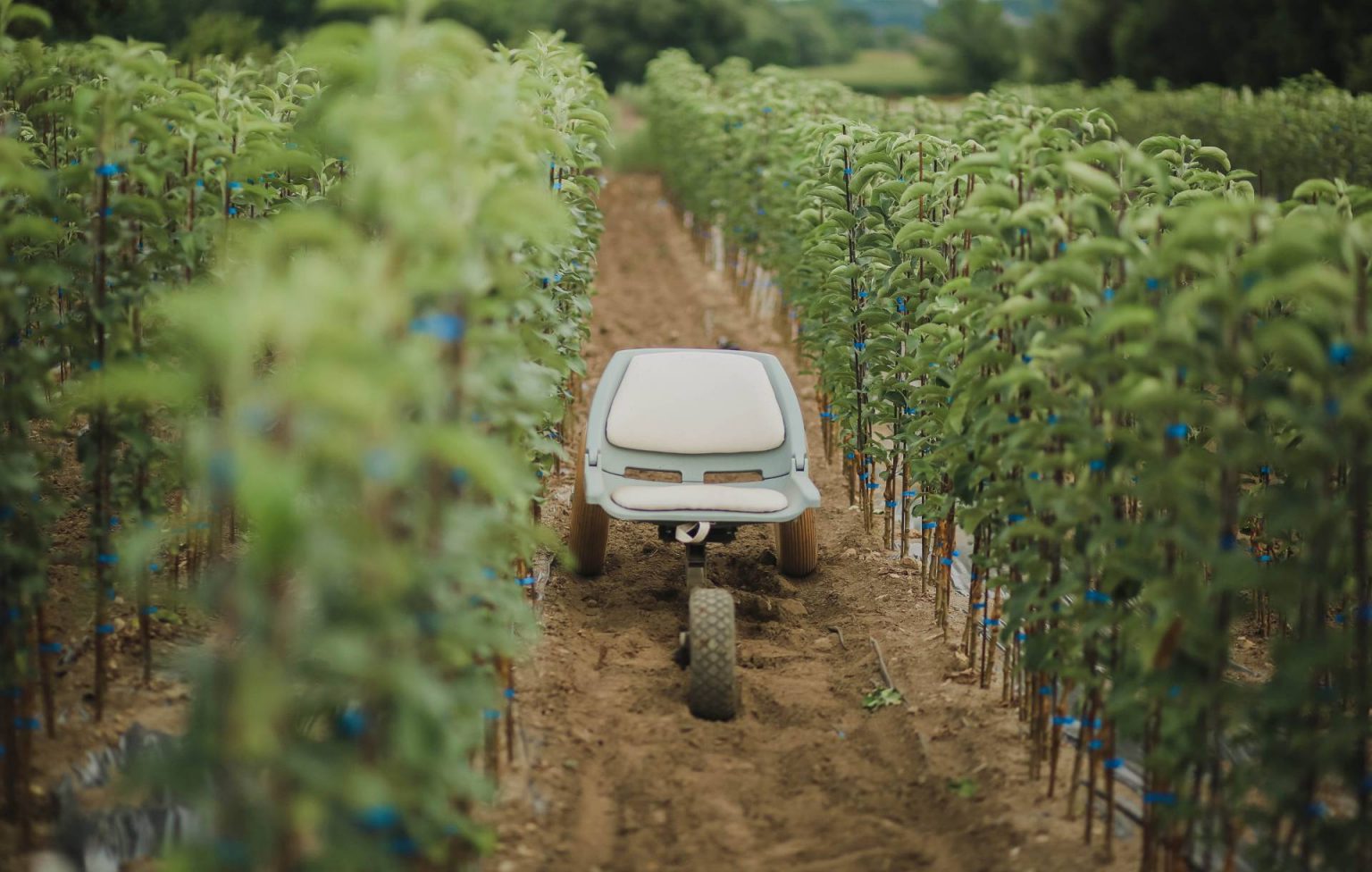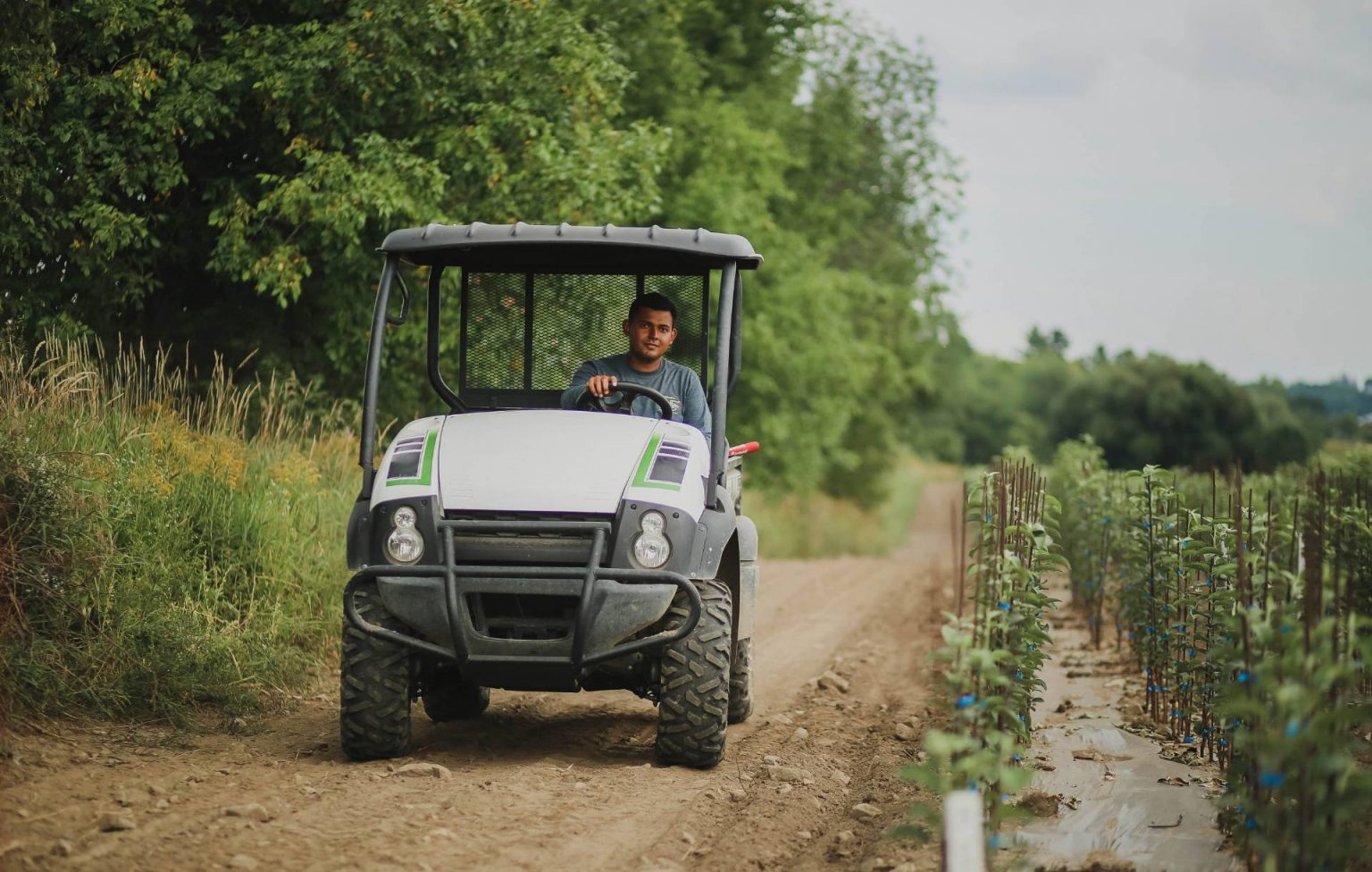F.A.Q.
Order Processing
The best time to place an order is when you are ready! However, to ensure you receive your preferred variety/rootstock combination in the quantity desired, orders must be placed by February 1 of a given year to receive the trees in the spring of the following year, or, in the case of two-year old trees, the year after.
For popular varieties, it is also possible to place orders in the summer and receive them the following spring.
To confirm your order, you must make a deposit of 25% of the total order amount. Payments may be made by bank transfer or by cheque through the mail. We do not accept credit cards.
Receiving your Trees
Your dormant bare root trees will be available for pick-up at the nursery warehouse from early April to May 20. Also, group delivery dates will be arranged for Quebec’s main apple-growing regions.
As long as the trees remain dormant and the roots are kept moist, they can be stored for a few days before being planted. If they are kept in cold storage (without any other fruits present), aim for a temperature of 2°C to 3°C. The roots should be covered, otherwise the ventilation system may dry them out.
The easiest and most practical storage method is to place the trees in an empty apple crate that is bottom-lined with polyethylene or a tarp. Once the trees are placed in the crate, the crate should be filled with enough sand, shavings or other substance to cover the roots and keep them moist. A 42″ x 48” crate will hold approximately 700 one-year-old trees or 300 two-year-old trees. This should provide you with an idea of the number of crates you will need to store your order of apple trees.
The best time to plant your bare root apple trees is in the spring, once the soil has thawed and it can be worked. This will provide your trees with a good growing season and allow them to establish their root systems and recover from the fall uprooting. It is important that the trees be dormant when they are planted.
Tree Maintenance
When planting your trees, the most important element is WATER. Do not rely on the morning dew or on forecasted rain showers. Water your young apple trees abundantly every week. To promote root development, you may add a rooting fertilizer (10-52-10) at a rate of 700 grams per 100 litres of water. Also, from the summer solstice until the end of July, you may add easy-uptake calcium nitrate fertilizer (15.5-0-0 ) at a rate of 500 grams per 100 litres of water. It is essential that you cease adding fertilizer in late July. Young apple trees must complete their vegetative growth in August and produce terminal end buds that will resist the rigours of winter.
Water, a stake and a weed-free bed.
There is no need to prune your trees the year you plant them. Give them space! They will have undergone transplant shock from being uprooted at the nursery and planted in the orchard. In subsequent years, follow the LLL rule for pruning: Cut the “Low” branches, i.e., those that are dragging on the ground due to the weight of the fruit. Cut the “Large” branches, i.e., those with diameters greater than half the diameter of the leader, to preserve the trunk’s dominance. Cut the “Lines,” i.e., any branches that grow past the row line and enter into the space of the neighbouring trees, or any that grow straight out toward the road and will be damaged by the tractor.
The first year … forget it! If trees do bloom in their first year, it is strongly recommended that the blooms be removed. This is because the trees will waste their energy growing fruit rather than establishing their root systems. Also, young trees bloom later than the other trees in the orchard, and this later blooming period coincides with ideal conditions for the development of fire blight, therefore increasing the risk of exposure to Erwinia Amylovora bacteria. And nobody wants that!
Issues
This is very likely apple scab, a fungus that develops following periods of heavy moisture on the leaves. Welcome to the world of apple growing!
In the spring of their second year in the nursery, the trees are cut back. The wounds can take some time to heal. A substance resembling black soot may develop on the scar. It is called sooty mould, and it is a benign fungus that does not cause any damage. Fungicide treatments will eliminate the fungus. It may also be wiped away.
These are the classic signs of a thirsty tree. Water it generously. With good weather, the tree will end up budding even more enthusiastically!






